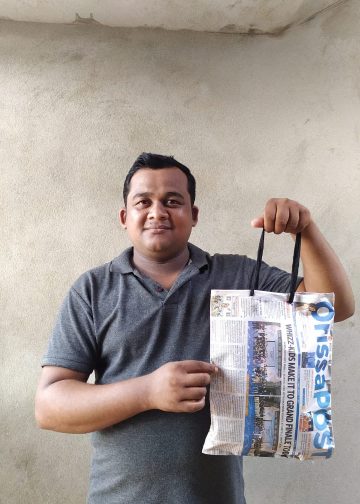New Delhi: Post Operation Sindoor, there was a lull in rogue drones entering Indian territory. However, recent sightings in Punjab of drones once again put the security agencies on high alert.
The problem, however, this time is that the drones are different and far more capable than the ones that were being sent in earlier. They fly at higher altitudes and are capable of penetrating Indian territory more deeply.
Recently, three pistols and over 1 kilogram of heroin were seized after the Border Security Force (BSF) intercepted six Pakistani drones near the International Border in Punjab’s Amritsar district. Four packets containing three pistols and a heroin packet with 1.070 kg of heroin were seized.
“Reliable input and keen observation followed by swift action of troops once thwarted attempts of Pakistan-based smugglers to pump drugs and arms in Punjab,” the BSF had said in a statement.
In the days to come, the BSF would have its hands full as the smugglers from Pakistan would go all out to send in a consignment. For a few months after India’s offensive to avenge the Pulwama attack, these smugglers had taken a back seat. However, they have come back in full flow with more sophisticated drones.
These drones have the capability of flying at higher altitudes before they descend in India. They do not take a straight route, but fly zigzag as it helps avoid detection. The smugglers also ensure that it crashes on Indian soil after the consignment is delivered, so that the data retrieval is harder.
The smugglers have been using advanced Chinese-made drones, and this has made it harder to detect. India is planning to deploy more interceptors capable of tracking drone details in real time, since the current mechanism in most places is limited to detecting the drone mainly by sound and visual spotting.
To add to the problem, the ISI has been encouraging terror groups to use drone technology heavily to aid infiltrations. The drones are being used to help get real-time assessment based on the situation, while infiltration bids are being made. Further, these drones are also being used to get information about any pitfalls at the time of infiltration.
This information comes in handy for the ISI to avoid the Indian security personnel and ensure unhindered infiltration. The ISI has enhanced the scale of this technology as it realises that the Indian armed forces are on a state of very high alert post Operation Sindoor.
During Operation Sindoor, the Jaish-e-Muhammad and Lashkar-e-Toiba had lost plenty of their cadres. Hence, in a recent meeting with the ISI held in June, these terror groups decided to not only ramp up recruitments, but also increase infiltrations.
In the current situation, the terror groups from Pakistan are fading it impossible to infiltrate into Indian territory. Due to a very high alert, infiltration is impossible, and hence, there is over-reliance on the use of sophisticated drone technology to infiltrate India.
For the Indian security agencies, this would remain a challenge with the borders it shares with Pakistan, both at Jammu and Kashmir as well as Punjab.
IANS






































